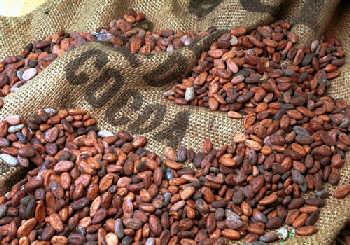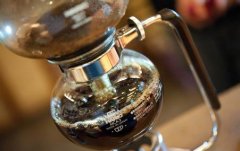The process of planting and picking Coffee basic knowledge of Coffee
The first people to drink coffee lived in Ethiopia. A drink called "Buncham" was found in the Arab scientific literature of 900-1000 AD, but it is not certain that it is coffee. These documents mainly record the scientific value of this bean called "Buncham".

In addition to introducing the protective effect of this drink on "stomach, organs and skin", the author also mentioned that it can give off fragrance all over the body. Indeed, coffee does have this special effect that seems to retain aroma through sweat glands. This deodorant effect must be popular before people get into the habit of taking regular baths, or in places where water resources are scarce.
According to an Arab legend, around 1250, the exiled chief Omar discovered exuberant wild coffee berries. The hungry and tired sheikh boiled some of the fruit in water and drank the brewed coffee pulp. He liked the change in his diet very much and gave the drink to some people who had just recovered from a serious illness.
Chief Omar brought back some fine coffee beans when he returned triumphantly from Mocha's exile.
There is also a popular story about an Arab (or Egyptian) shepherd who found that his goat became more energetic after eating coffee fruit. He reported his findings to the abbot of the local monastery. The abbot conducted experiments on monks and found that this soup could keep them awake during night prayers.
It is recorded that in 1454 the commentator of the Islamic Code of Aden visited Ethiopia, where he saw his countrymen drinking coffee and sent someone to buy some coffee beans when they returned home. This drink not only frees him from illness, but also clears his head. Soon, coffee became popular among Islamic monks.
Coffee consumption and cultivation in Yemen can be traced back to 1454. The government allowed drinking and growing coffee that year, because the government may find that the exciting function of coffee is preferable to the hypnotic function of gat. Gat was widely planted and used nationwide at that time.
The word coffee comes from the Latin word for the genus coffea. This genus is a member of Rubiaceae. It has more than five hundred species and 6000 varieties, most of which are heat-stagnant trees and shrubs.
Linnemas, a Swedish botanist in the 18th century, described this genus, but botanists disagreed on its precise classification. There may be at least 25 major varieties of coffee, all of which are native to tropical Africa and some islands in the Indian Ocean. However, due to the varieties of trees and seeds, they are also different. All kinds of coffea are woody plants, but they may be low shrubs or trees higher than 10 meters, and the leaves vary in color from light yellow to purple.
Coffee will probably be seeded in 3-4 years, and the yield will decrease after 20-25 years, but some coffee trees still bear fruit beyond 100 years of life. The branches of coffee trees grow opposite and grow horizontally or drooping branches, while their leaves grow on short-diameter branches. The two main species are Arabica (CoffeeArabic) and CoffeeRobusta. The leaves of Arabica are about 15 centimeters long. Robbins' leaves are long, soft-oval or pointed in shape and bright green in color.
The first flowering period of the coffee tree is about 3-4 years in the forest. The flowers are white, dense and grow in clusters in the second branch of the coffee tree. The petals are 5-6 petals, the fragrance is very strong, the fruit is a drupe, 1.5 cm in diameter, it is green at first, it turns red after maturity, and the seeds of the cherry tree. The two coffee beans stand upright in the fruit on one side of their plane, each black by a thin outer membrane. This membrane is called Silverskin. Its outer layer is also covered with a yellow skin, called Parchment. The whole coffee is wrapped in a sticky pulp to form the inside of the coffee fruit, which is soft and sweet, with the outermost shell.
In 1753, Linnaeus determined the taxonomic position of Arabica coffee in coffee taxonomy. It can produce Arabica beans, is high quality coffee in the world, and is the only coffee that can be drunk without any ingredients. Arabica coffee is sometimes referred to as Brazilian coffee (from Brazil) or mixed coffee (from other places).
The two best varieties of Arabica coffee are Tippi and bourbon. But many other varieties have also come a long way, including Catura (grown in Brazil and Colombia), Mondu (from Brazil), Tiago (widely cultivated in Central America), San Ramon (a small plant) and the famous Jamaican Blue Mountain Coffee.
Arabica coffee tree is usually a larger shrub, the leaves are green, oval, the fruit is also oval, generally have two flat seeds, if only one seed sprouts, it is called pea-shaped coffee beans.
The word "Robert" comes from the most widely grown variety of Canifra coffee. "Robbins" is a very sturdy shrub or small tree, more than 10 meters tall, but its roots are very shallow. Its fruit is round, its ripening period is up to 11 months, and its seeds are oval, smaller than Arabica coffee beans. Robbins coffee is grown in central and western Africa, throughout Southeast Asia, and in a region called Cornelon in Brazil.
The Lieberica Coffee Tree is tall and strong, 18 meters high, its leaves are large and tough, and its fruits and beans are also very large. Lieberica coffee is grown in Malaysia and West Africa, and its production is small because of its unique taste and low demand.
At present, Arabica coffee accounts for about 70% of the world's total coffee production, but the proportion of Robbert coffee is increasing, mainly because the fruit of Robbins is better, and it is less susceptible to insect pests than Arabian trees.
Arabica coffee and Robbite coffee are harvested once every 3 to 4 years, and their lifespan varies due to different production conditions and different degrees of care (usually 20 to 30 years, after which they have to be replanted). Both varieties need plenty of sunlight and moisture. Arabica coffee trees like the seasonal climate of 15-24 ℃, while Robbins prefer the warm equatorial climate, where the temperature greenhouse is in the range of 24-29 ℃. When the temperature drops below zero, both kinds of trees freeze to death (although Arabian coffee trees are hardy), and they need about 152.4 centimeters of rainfall each year.
The traditional method of growing coffee trees is to plant trees of similar varieties near them in order to shade the coffee trees and protect their fruits from strong light. In addition to reducing the damage caused by direct exposure to the sun, this also helps to retain moisture in the soil. Irrigation and the use of chemical fertilizers are more modern methods, but they require financial input, which requires that yields and their income must be cost-effective, so they are used only in commercial plantations.
Coffee can be grown on vast estates, farms of different sizes, or on small plots of land opened up in forests or farms. For example, in Brazil and Guatemala, many large estates are dedicated to growing coffee, and in Brazil, more and more people are using mechanical harvesting. Large-area farming has high yields, but also high inputs and costs; small-scale farms have small yields but lower costs.
After 3 or 4 years of growth, the coffee tree grows and begins to bear fruit, with one fruit arranged in clusters or clusters along the branches.
The ripening period of most Arabica coffee beans is 6-8 months, while that of Robbins is 9-11 months. Therefore, although in some countries where the dry and wet seasons are not obvious, such as Colombia and Kenya, there are two flowering periods a year, that is, two harvests, but strictly speaking, there is only one ripening period a year.
Due to different regions, the harvest time is also different. Regions north of the equator (such as Ethiopia and Central America) are generally harvested from September to November. In areas south of the equator (such as Brazil and Zimbabwe), although the harvest can last until August, the main one is in April or May. Countries in the equatorial region, such as Uganda and Colombia, can harvest all year round, especially those plantations that can make good use of different elevations. As a result, there may be new coffee beans for most of the year.
As far as picking itself is concerned, there are two ways. One is picking in pieces, that is, picking all the beans after a walk in the garden. The other is selective picking, that is, walking between trees several times at intervals of 8 to 10 days, and only picking ripe red berries. Selective picking is more expensive and labor-intensive than picking in slices, and is generally used only for Arabica coffee beans, especially those that need to be washed.
The number of coffee beans picked depends on a variety of factors, the most obvious being the height of the trees and the layout of the farm or plantation. The average family farm can pick an average of 50 kilograms and 100 kilograms a day. However, only 20% of these weights are real coffee beans, so the average picker can only pick 10 to 20 kilograms of coffee beans. Coffee beans are packed in bags with a standard weight of 45 to 60 kilograms, so it takes 3 to 6 days for a worker to fill a bag.
It has been calculated that the cost of harvesting a plantation or farm is half of the total cost of the year. In Brazil, people have tried many times to use mechanical pickers to reduce these costs. The machine can shake coffee branches across the coffee tree so that the berries that become loose because they are ripe will fall into the funnel. Mechanical pickers are only suitable in areas with better natural conditions, and they need to be adjusted, because they can only be used where trees can be planted in rows straight, and after that, you need to check the machine coffee beans and pick out the leaves and branches that have fallen in the funnel.
Therefore, a large part of the coffee is picked by hand. This requires the largest seasonal division, and pickers should also be careful not to pick coffee beans that are not hot, bad or too ripe, as they can affect the overall quality of the coffee harvested. Coffee beans that are not so good are classified as "ordinary", "sour" or "fermented", and the last one is very bad.
Important Notice :
前街咖啡 FrontStreet Coffee has moved to new addredd:
FrontStreet Coffee Address: 315,Donghua East Road,GuangZhou
Tel:020 38364473
- Prev

The basics of coffee cultivation the types of coffee beans
What is coffee? Coffee is the fruit of a Rubiaceae plant growing about 6000 feet above sea level, distributed on the world's narrow subtropical axis; coffee trees grow green all the year round and can grow up to 20 feet tall, and are generally controlled at 8 to 10 feet for easy harvest. It takes three to five years for the coffee tree to bear fruit. First of all, it produces small white flowers that resemble jasmine in shape and size.
- Next

Coffee varieties more precious than Blue Mountain Coffee beans
Coffee name: Napoleon Origin: British St. Helena (Saint Helena Island, the claustrophobic island where the hero Napoleon was exiled) Farm: Napoleon Farm Variety: Bourbon Coffee name: blue Elise (Elise Blue) Origin: French New Caledonia (New Caledonia Island) Farm: Caf Kua
Related
- Beginners will see the "Coffee pull flower" guide!
- What is the difference between ice blog purified milk and ordinary milk coffee?
- Why is the Philippines the largest producer of crops in Liberia?
- For coffee extraction, should the fine powder be retained?
- How does extracted espresso fill pressed powder? How much strength does it take to press the powder?
- How to make jasmine cold extract coffee? Is the jasmine + latte good?
- Will this little toy really make the coffee taste better? How does Lily Drip affect coffee extraction?
- Will the action of slapping the filter cup also affect coffee extraction?
- What's the difference between powder-to-water ratio and powder-to-liquid ratio?
- What is the Ethiopian local species? What does it have to do with Heirloom native species?

